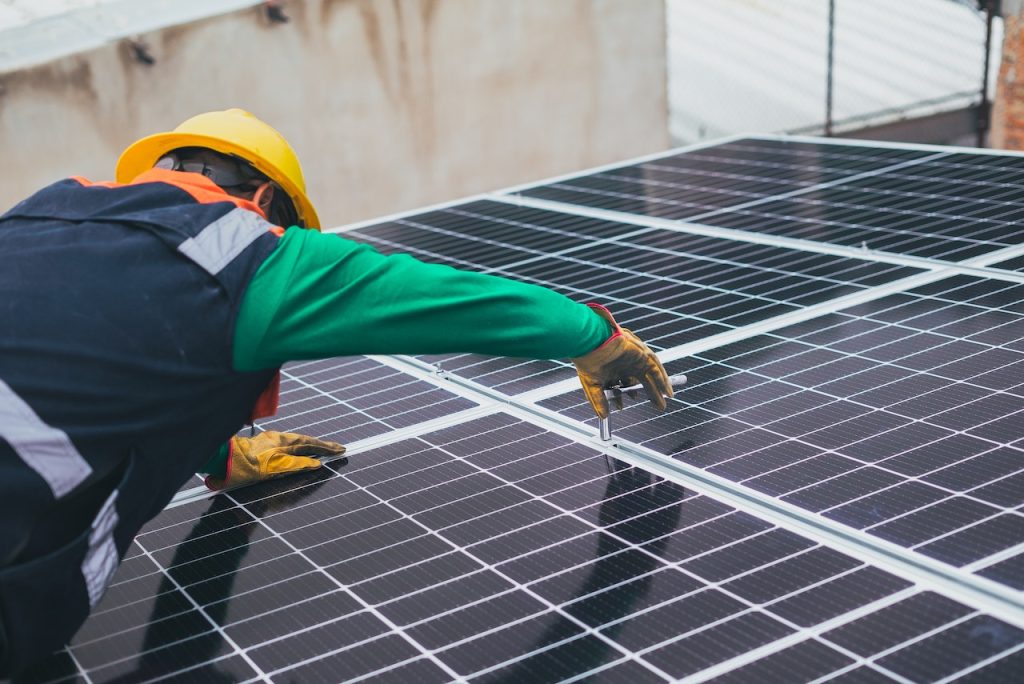Whether you’re thinking of installing solar panels on your home or office, there are several things you should know about the process. You should be aware of what to expect from the pre-screening process, what you can expect from the installation process and how to find a qualified San Diego solar installer.
Cost of solar panels for a 2000 square foot house in California
Typical costs for solar panels vary by home size, type of panels, and the installation method. Labor costs and other components can also affect the overall cost.
A 2,000 square foot house requires about 14 to 22 premium solar panels to generate enough electricity. This will depend on your climate and the amount of sunshine your area receives.
If your roof receives no direct sunlight, you will need more panels. Larger homes require more panels, and this can add to the cost.
Your energy usage will also play a role in the number of solar panels you’ll need. The average home in California uses approximately six kilowatts for electrical needs. This means that an average 5-kilowatt system will produce about $15,000 to $25,000 a year.
Regardless of how much electricity you need, there are several incentives available to make solar more affordable. For example, the federal government offers a credit of up to 30% of the total cost of a solar panel system. The state of California offers several tax credits to help offset some of the cost.
Pre-screening process for solar companies in San Diego
Choosing the best solar panel company in San Diego can be a daunting task. Not to mention the shady characters out there. The good news is there are companies that stand by their oars. Luckily, there are plenty of online review sites and comparison sites that can help you find the best of the best. Then, there are companies like SolarReviews that can prescreen companies for you. Using a company like this will save you time and money. Hopefully, you will end up with a list of recommended San Diego solar installers that are worthy of your business.
The best companies to contact are those that have been in the industry for at least 25 years. The best companies to contact should be able to answer your questions in plain English, or at the very least, explain themselves in a way that you can understand. Ideally, you should not even have to ask! In addition to this, make sure that they are in a city that is close to your home or office.
Tax credits for solar energy systems in California
Several state and federal tax credits for solar energy systems in California make going solar affordable. Depending on where you live, there are incentives for homeowners as well as businesses. In addition to the statewide and federal incentives, you may be able to take advantage of local and private programs.
For example, the Sacramento Municipal Utility District offers rebates for homeowners who install solar systems. The program includes a rebate of up to $2,500 for installing a battery.
The Disadvantaged Communities – Single-family Solar Homes (DCSAH) program provides an upfront cash-back incentive to low-income households who install solar photovoltaic (PV) systems. The program is administered by the non-profit organization Grid Alternatives. The program provides an upfront cash-back incentive of up to $3 per watt of solar installed.
There is no cap on the federal tax credit. However, you must have a taxable income and be the owner of a PV system to qualify for the credit. You can claim the credit on your IRS form 5695. Currently, the average tax credit for a 6 kW system in California is $4,914.
The state of California also offers a property tax exemption for solar. This allows homeowners to avoid taxes on the value of their home due to the increase in value due to a solar system.
Environmental impact of solar panel manufacturing
Creating solar panels is a relatively clean energy source, but it is also a carbon-intensive process. It requires sourcing materials, mining, and transporting materials. The total greenhouse gas emissions associated with producing and using solar panels are lower than those associated with natural gas or coal, but they are slightly higher than those for wind power.
In a 2017 study published in Nature Energy, researchers looked at the full life cycle of greenhouse gas emissions from a range of power sources, including solar. They found that solar has a carbon footprint that is 20 times lower than those associated with coal-powered electricity.
Aside from the carbon impacts, solar energy has other negative impacts, including loss of habitat and soil erosion. Often, solar facilities require the clearing of vegetation to accommodate the panels’ needs. This can negatively impact native wildlife and habitat.
The chemicals used to make panels and clean them are not only harmful to the environment, they can also pose a risk to workers. For example, solar cells contain cadmium, which is toxic to plants, microorganisms, and animals.

